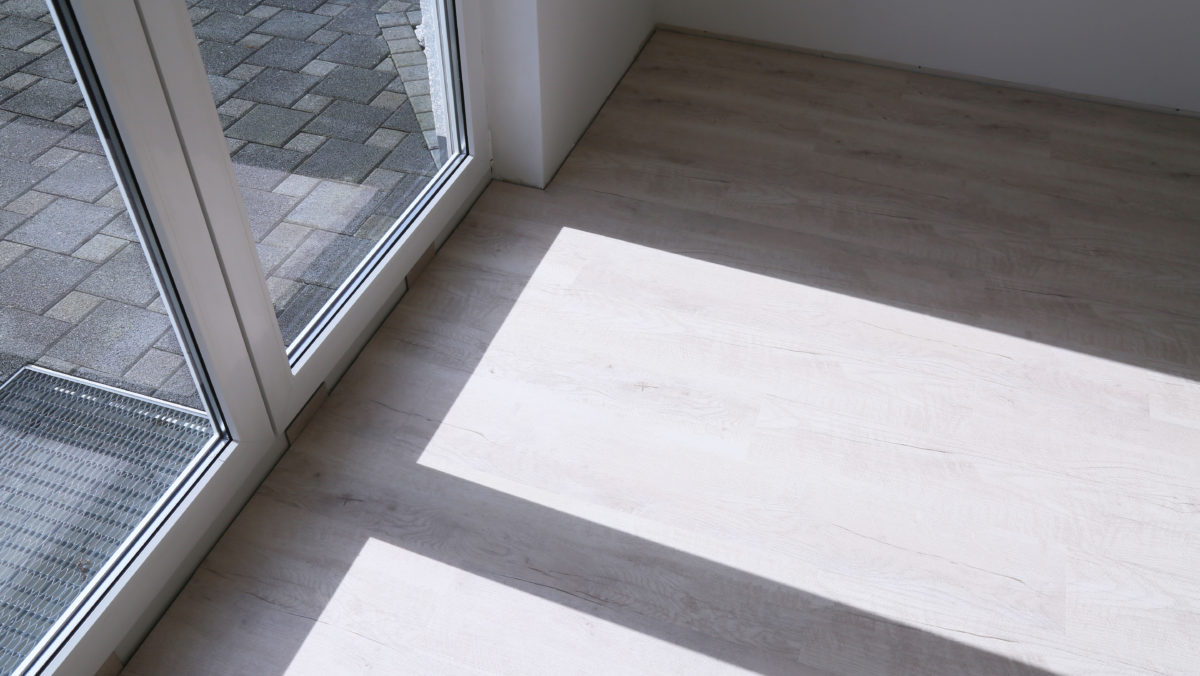
The correct expansion joint for vinyl flooring should be maintained due to the properties of the material. In this article, we highlight relevant details during installation. Why is it important to have expansion joints and to adhere to them? Where should they be maintained? Why are expansion joints so crucial for vinyl? We are happy to provide you with insights on this topic.
Content
Heat Development on the Surface
In our case study, we find ourselves in a room with a vinyl floor covering. Light enters through the floor-to-ceiling windows and falls on the floor. On the surface of the vinyl, a higher temperature develops with prolonged exposure to sunlight, causing a reaction in the material. Vinyl flooring reacts differently to heat development compared to laminate or parquet. The latter is sensitive to moisture or humidity.
Vinyl flooring, on the other hand, expands significantly with heat development. This type of temperature increase due to sunlight is predominantly experienced in rooms with large windows and prolonged light exposure. It is good to know that light-coloured floor coverings expand less than dark vinyl types. Light vinyl reflects the sun better while dark vinyl floors absorb heat more intensely.
With underfloor heating, vinyl flooring is subjected to greater expansion. Here, the heat source is below the vinyl floor. Therefore, vinyl flooring manufacturers typically set a limit for the surface temperature of underfloor heating at 28°C. This prevents excessive expansion of the floor. Just as important as the limited temperature is the slow heating of the underfloor heating system. That is why quick-acting electric underfloor heating systems are taboo for vinyl flooring. Read more about vinyl flooring on underfloor heating here.
Maintain at Least 5 mm Expansion Joint for Vinyl
Due to these properties of vinyl, we recommend that you always maintain the necessary edge distance. Points of contact can occur at:
- all walls
- all pipes
- other fixed elements such as columns or kitchens
- built-in objects
Here, a minimum distance of 5 millimetres is strictly to be maintained. Consider that vinyl floors with dark decors expand more in the summer due to high heat.
Follow this rule of thumb for the expansion joint in vinyl flooring: At least 5mm / 1mm for every metre of room length.
Properly Seal the Vinyl Flooring Expansion Joint
The natural expansion and contraction behaviour of vinyl flooring requires a sufficient expansion joint. Many simply fill the resulting gap with silicone, but this glues the flanks to the fixed object. This leaves not enough space for the vinyl flooring to expand. Consequently, it bulges with heat development.
To properly seal an expansion joint in a floating vinyl floor, first fill the joint with a PE cord (polyethylene cord, also known as round cord). This serves as a spacer, preventing the silicone from fully penetrating the joint. Then apply silicone to the top of the joint to seal and protect it. The silicone forms a flexible layer that allows movement of the floor while also keeping out moisture and dirt.
Experience the best service with planeo - because you need it!
No matter what challenges you face with your project, planeo provides you with the right solution. Benefit from the advantages of our services:
- Free samples for many of our products: Order up to 7 samples at no cost, for instance, of our vinyl floors, click vinyl, adhesive vinyl, or rigid vinyl.
- Express delivery - for urgent projects and quick decisions.
- Expert advice - We offer professional consultation through our contact page or answer your questions directly in the comments.